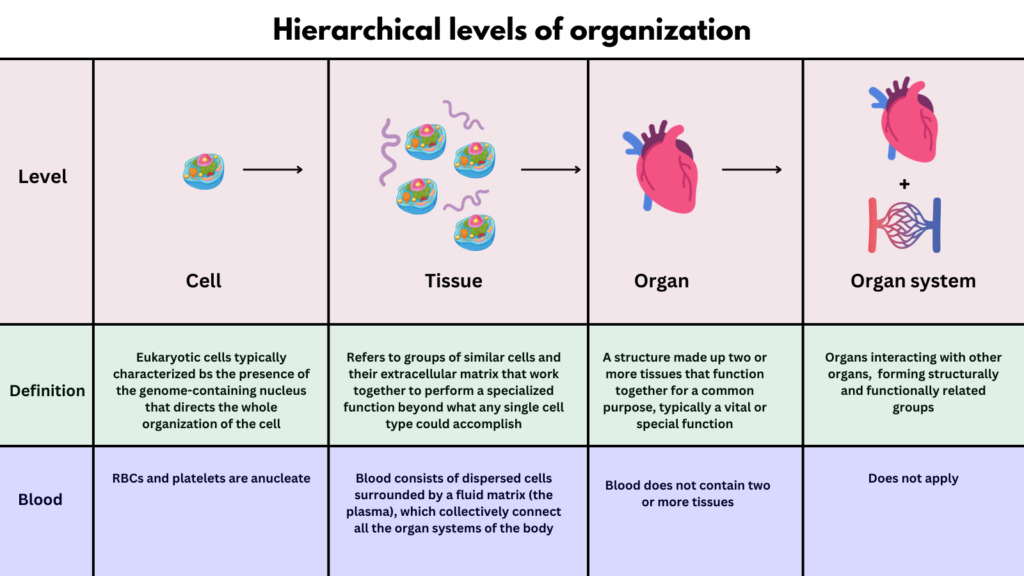
Is blood a collective of cells, a tissue, an organ, an organ system, or something else altogether? Tough question! It is really difficult it is to draw boundaries around blood and pin it down as an entity on par with other cells, tissues and organs.
CELLS
Unlike other eukaryotic cells, RBC and platelets are anucleate. It can be argued that since megakaryocytes give rise to 1000s of platelets, they are not really cells, but cell fragments. So even at the lowest level of organization, we run into trouble!
TISSUE
Tissue refers to groups of similar cells and their extracellular matrix that work together to perform a specialized function. Today, just 4 different types are recognized: connective tissue, muscular tissue, nervous tissue and epithelial tissue. Some classification schemes include blood as a specialized fluid connective tissue that transports fluid, nutrient, waste and chemical messengers. But it hardly does justice to blood’s transcendent (emergent) properties.
ORGAN
An organ is a structure consisting of more than one kind of tissue, exist as a discrete unit and perform a specific function. Blood can certainly be viewed as an independent unit, and it does perform specific functions (e.g. O2 delivery). However, unless we accept its designation as a fluid connective tissue, blood does not contain even a single tissue type.
ORGAN SYSTEM
If we can’t agree about blood as a single organ, surely it does not meet the definition of an organ system (more than one organ).
BIOLOGICAL SYSTEM
All biological systems are formed by subsystems of various orders and are part of suprasystems of a higher order. The identification of system components at any given level depends on identifying boundaries and establishing structural and functional links between elements, rather than relying on arbitrary designations of tissue or organ. If we accept blood as a biological system, then the endothelial lining of the blood vessel wall may be thought of as the boundary, separating blood from other systems. Blood may be considered a nested system consisting of various subsystems, including RBCs, WBCs, platelets, endothelial cells and plasma. Blood itself is embedded in a supersystem, the hematological system that includes blood, marrow and the lymphatic system.
For a more detailed discussion click here.
